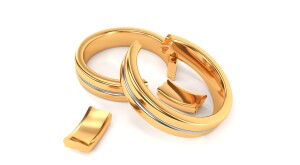By Princess Gabbara
Not only is your smile your most alluring asset, but it’s one key to unlocking ageless beauty. Research suggests that smiling makes you appear healthy, youthful and even thinner! But teeth can become yellow and brittle over time. Sometimes their shape or positioning can cause us to be self-conscious. But we don’t have to settle for a less than dazzling smile. Discoloration, cracks, chips, uneven contours and even receding gums can all be addressed. “Sisters” asked Catrise Austin, the cosmetic dentist behind Cardi B’s smile transformation, how to get and keep a gorgeous grin.
To Brighten Color
Eat smile-friendly foods. Tomato-based sauces, berries, coffee, tea, colas, red wine and dark vinegar-based salad dressings can stain your teeth and can gradually wear down your tooth’s enamel. So Austin suggests eating foods that are naturally good for your teeth, such as apples, strawberries, pineapple, carrots, broccoli, nuts, yogurt, milk and hard cheeses. They contain malic acid, bromelain and other enzymes, which work to increase saliva production and shield your teeth from stains and hard-to-remove plaque.
Good to know: Brushing with a medium- or hard-bristled toothbrush and chewing on ice can also erode the protective layer of your teeth. The fix? Switch to a soft-bristled brush, and skip (or suck) ice cubes.
Try at-home whiteners. According to Austin, brushing with baking soda is a natural way to brighten your smile. Free radicals are released once baking soda makes contact with water, she says, and they work to fight stains, bad breath and mouth ulcers. The downsides? Baking soda doesn’t contain fluoride, which helps prevent cavities and decay. And it can also be quite abrasive, leading to enamel and gum erosion. To combat this, combine a sprinkle of baking soda with your favorite toothpaste and limit baking soda brushing to a couple of times a week.
Good to know: Investing in the right tools will also brighten your pearly whites. “An electric toothbrush plus a water flosser is like a carwash for your smile,” Austin says. “People change cars every three years and that’s an investment. But why not invest in your smile? A great smile can boost your confidence.”
Go to a pro. Whitening strips work for some, but not all. “Discover where you are on the color spectrum,” advises Austin. “If your teeth are mildly yellow or almost white, you can try anything over the counter. But the more yellow or the darker your teeth are, you might not see results with over-the-counter products.” Products used in professional teeth whitening treatments, which costs around $500, contain higher concentrations of hydrogen peroxide to remove stains that occur below the tooth’s surface. For optimal results, your teeth should be cleaned prior to the treatment, which takes anywhere from 30 to 90 minutes, depending on the severity of stains. For the first 24 hours afterward, steer clear of teeth-staining foods and beverages, such as red wine.
Good to know: “Anything that can stain a white T-shirt can stain your teeth,” warns Austin. “Stick with chicken, fish, rice, potatoes and light-colored salad dressings like ranch or Italian. If you must have coffee, bypass your teeth with a straw, and drink iced coffee.” Got sensitive teeth? Hydrogen peroxide can increase sensitivity, so tell your dentist beforehand.
To Even Out Shape
Look into veneers. These are thin porcelain covers that are permanently bonded to the front of teeth to alter their shape, color and overall appearance – and they’re the secret behind many celebrity smiles. Unlike composite veneers, which need to be replaced every three to five years and cost around $500 per tooth, porcelain veneers are permanent and cost a hefty $1,500 per tooth. But few people need to place veneers on all their teeth; between six and eight is the norm. And the results can be life-changing. “My job is to guide you to a color and shape that fits your face, to make the veneers look natural,” says Austin, whose A-list clients include Toni Braxton, Missy Elliot and Wendy Williams. “We can mask discoloration; make a tooth that’s too short appear longer; make a tooth that’s crooked appear straighter. If you’re not a candidate for whitening, this is the next option.”
Before your veneers are placed, your dentist will shave off a half a millimeter of the tooth enamel to make room for the veneers and to prevent a bulky appearance. Then she’ll take a mold of your teeth and create temporary veneers, which you test drive until the permanent ones come back from the lab, usually a couple of weeks later. The procedure generally requires two visits, but aftercare is straightforward. Take care of your veneers as you would your own teeth, by brushing twice a day, flossing and rinsing with mouthwash.
Good to know: Since veneers are considered a cosmetic procedure, they’re generally not covered by insurance. To protect your investment and help them last longer, wear a bite guard if you grind or clench your teeth at night.
Repair chips and hide cracks. If veneers don’t appeal to you (or fit your budget), consider recontouring, which offers instant results and will set you back, at a minimum, $25 per tooth. Using a sanding disc or a fine diamond bur, your dentist smooths out minor imperfections such as small chips and cracks, improving irregularly shaped teeth. Recontouring is usually quick and painless, so anesthesia isn’t normally needed. But since part of your tooth’s enamel is shaved off during the procedure, tooth sensitivity may be heightened afterward.
Good to know: Your enamel can be strengthened by using specially formulated toothpaste. Sensodyne Pronamel Gentle Whitening Fluoride Toothpaste and Colgate Enamel Health Multi-Protection Toothpaste are some options. Regular rinsing with mouthwashes such as ACT Restoring Anticavity Fluoride Mouthwash and Colgate Enamel Health Mouthwash can also reduce sensitivity.
To Restore Receding Gums (and Soothe Sensitivity)
Ask about gum grafts. The procedure is used to treat gum recession and tooth sensitivity, which is often exacerbated by receding gums. (Age-related gum recession gives rise to the expression “long in the tooth.”) “If you brush too hard, your gums will start to disappear, leaving your roots exposed and causing extreme sensitivity,” explains Austin. “Having sensitive teeth can really mess with your lifestyle and hinder you from eating foods you enjoy. So it’s worth it to go ahead and undergo the procedure for permanent relief.”
During a gum graft, your periodontist usually removes healthy gum tissue from the roof of your mouth and then grafts it onto the exposed areas, usually at the gumline. Gum grafts can cost from a few hundred to thousands of dollars, but many insurance companies will cover a portion of the expense. Generally little to no preparation is needed, but, if you’re given a sedative, you’ll need someone to drive you home post-surgery. Your periodontist will likely send you home with an antibacterial mouthwash and a rundown of dos and don’ts. After a couple of weeks, your stitches will loosen and start to fall out. But a follow up appointment might be necessary to ensure that you’re healing properly.
Good to know: Proper aftercare is tedious but crucial for a successful recovery, which can take as long as six weeks. Eat soft foods and avoid brushing the gum line and the roof of your mouth until you’re completely healed.

Stocksy










